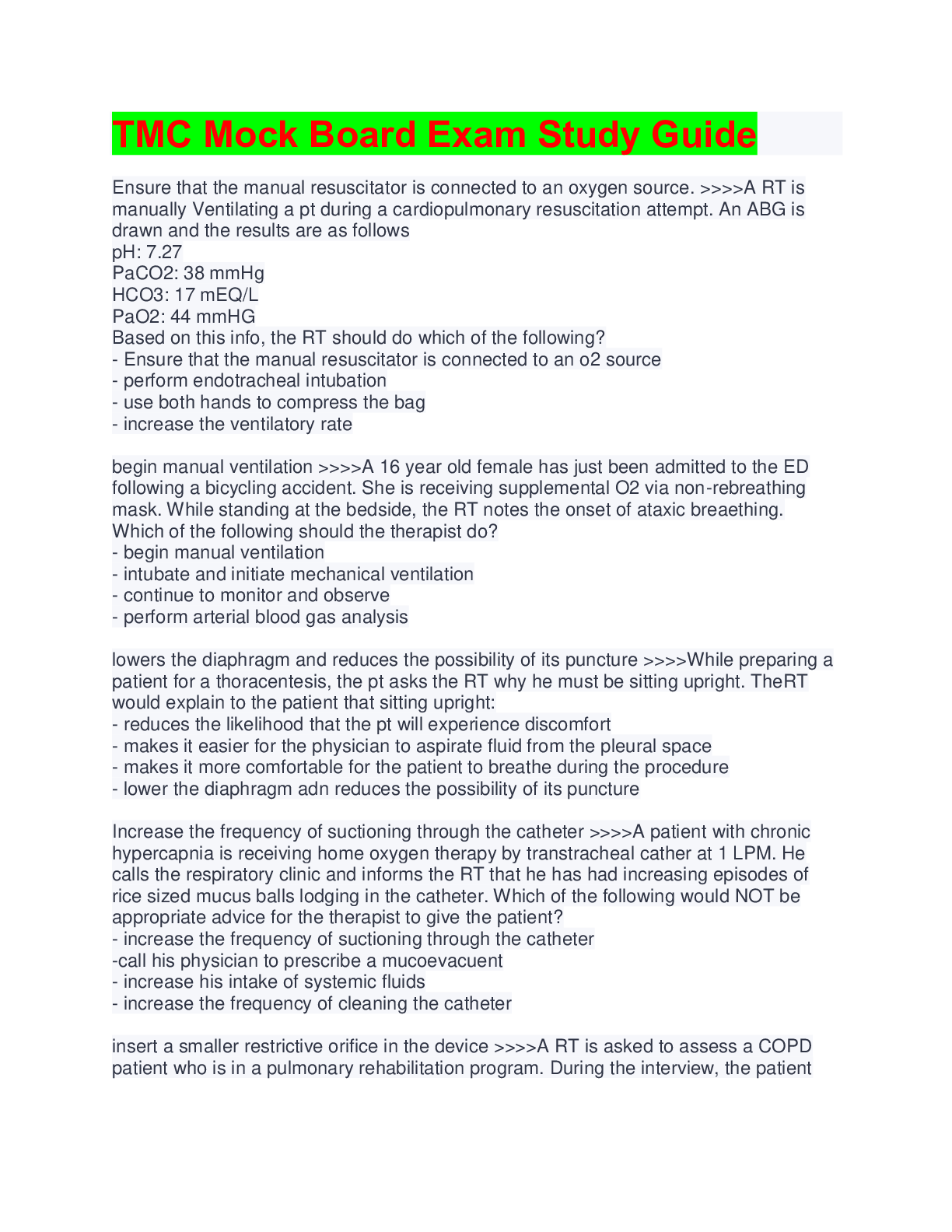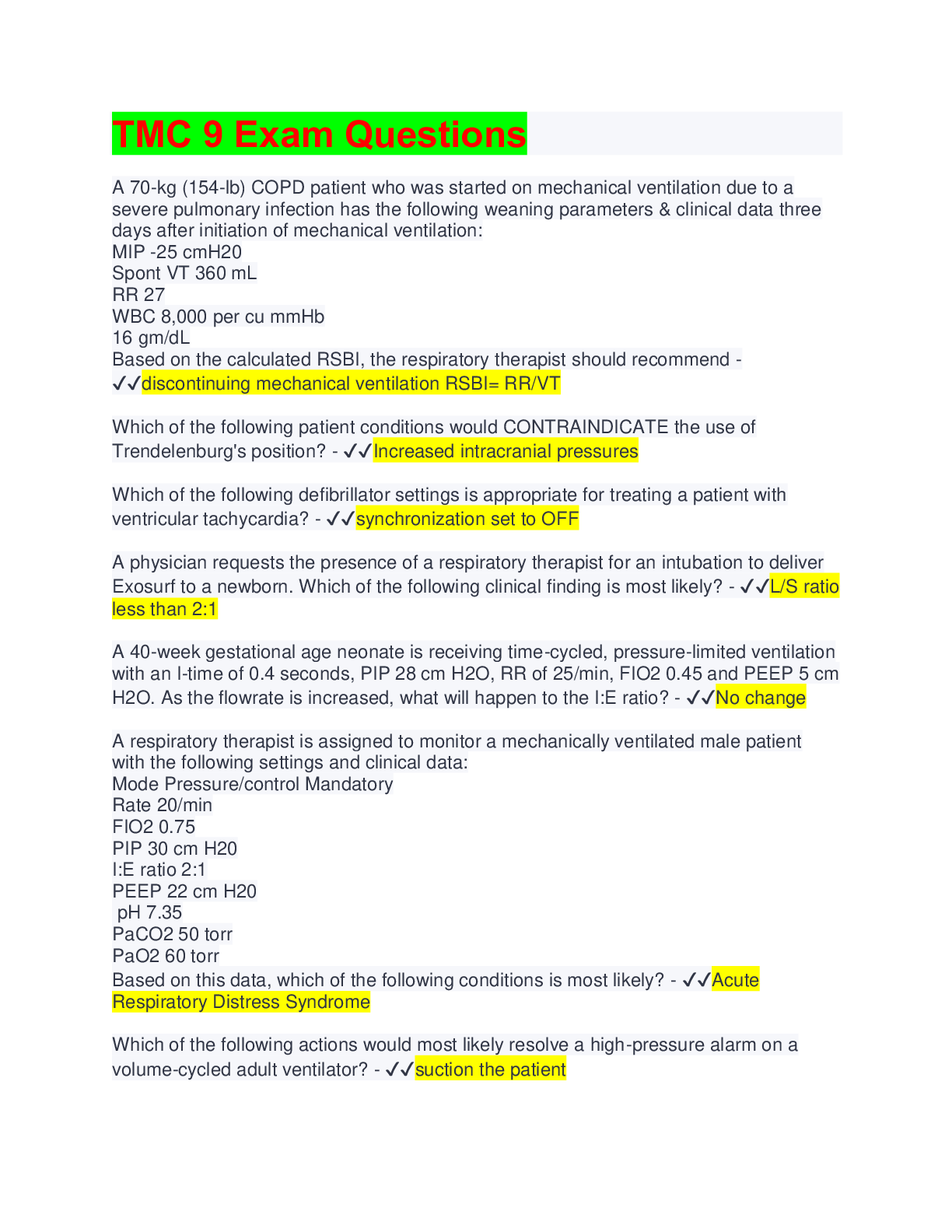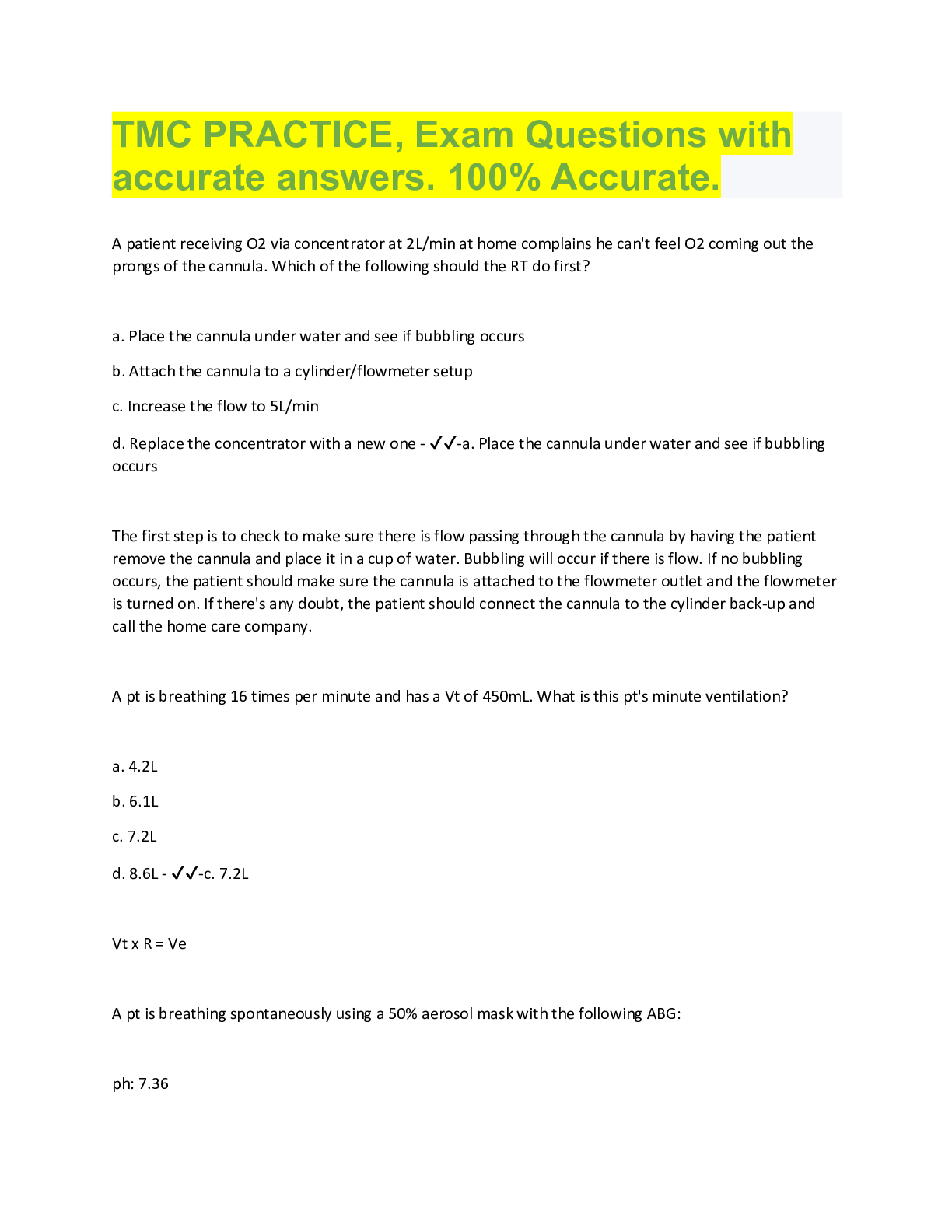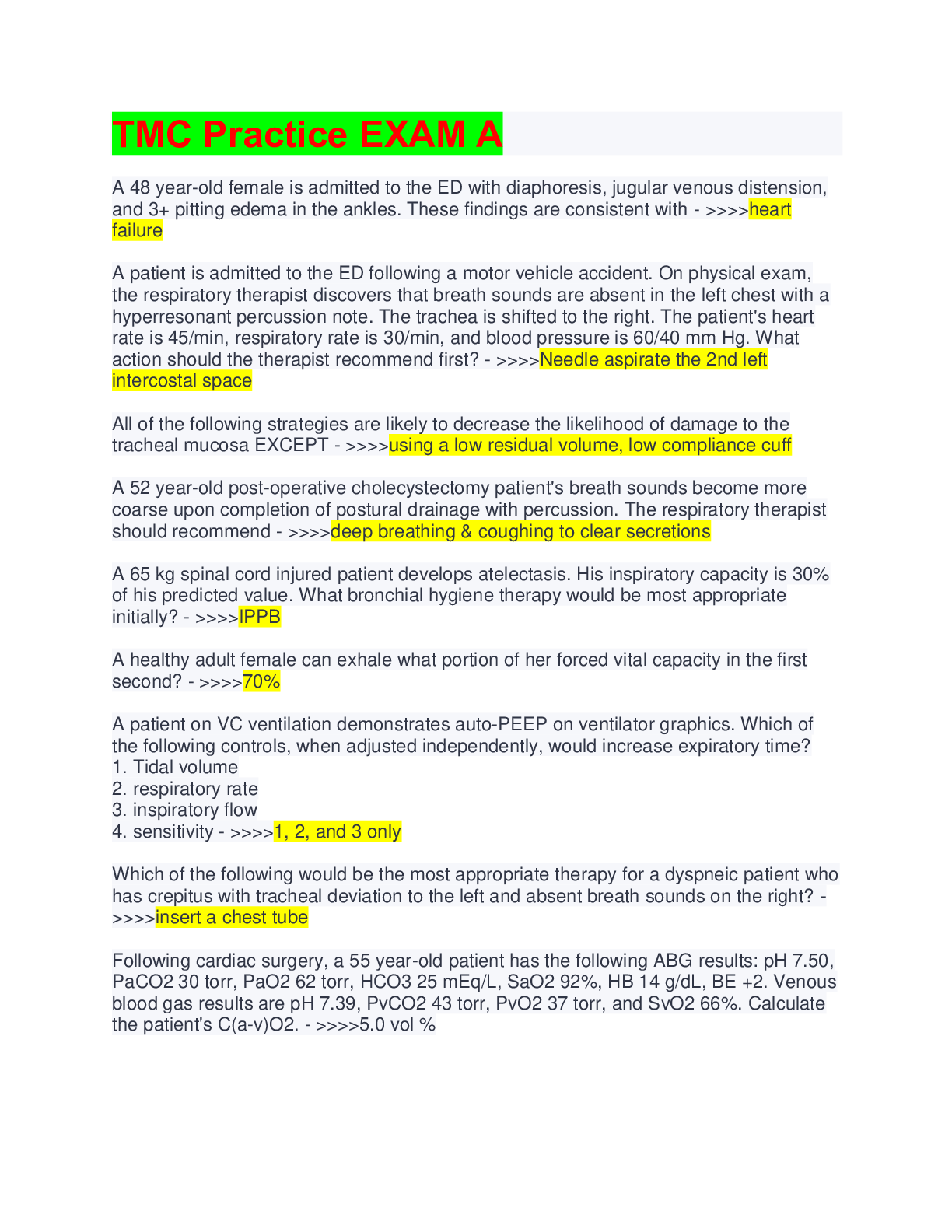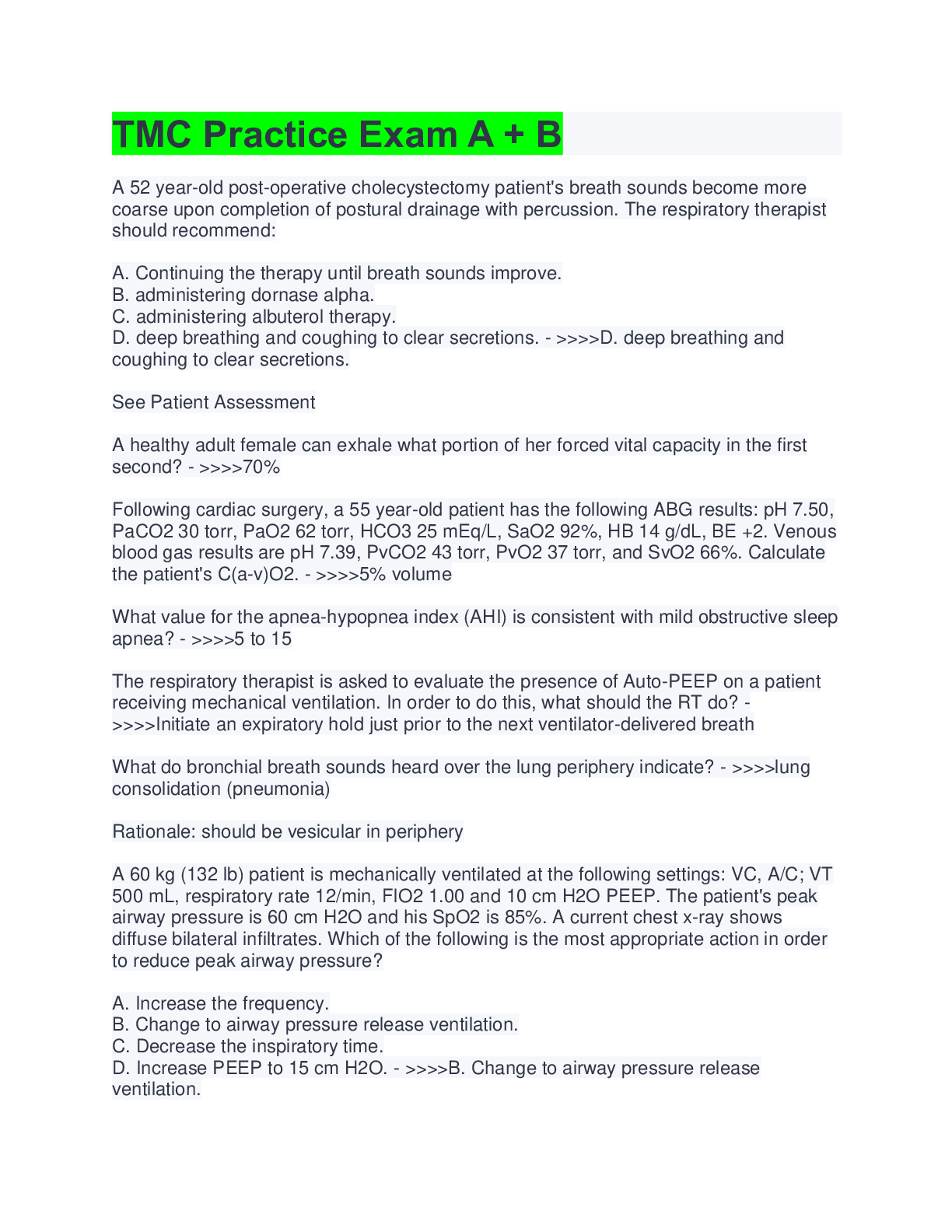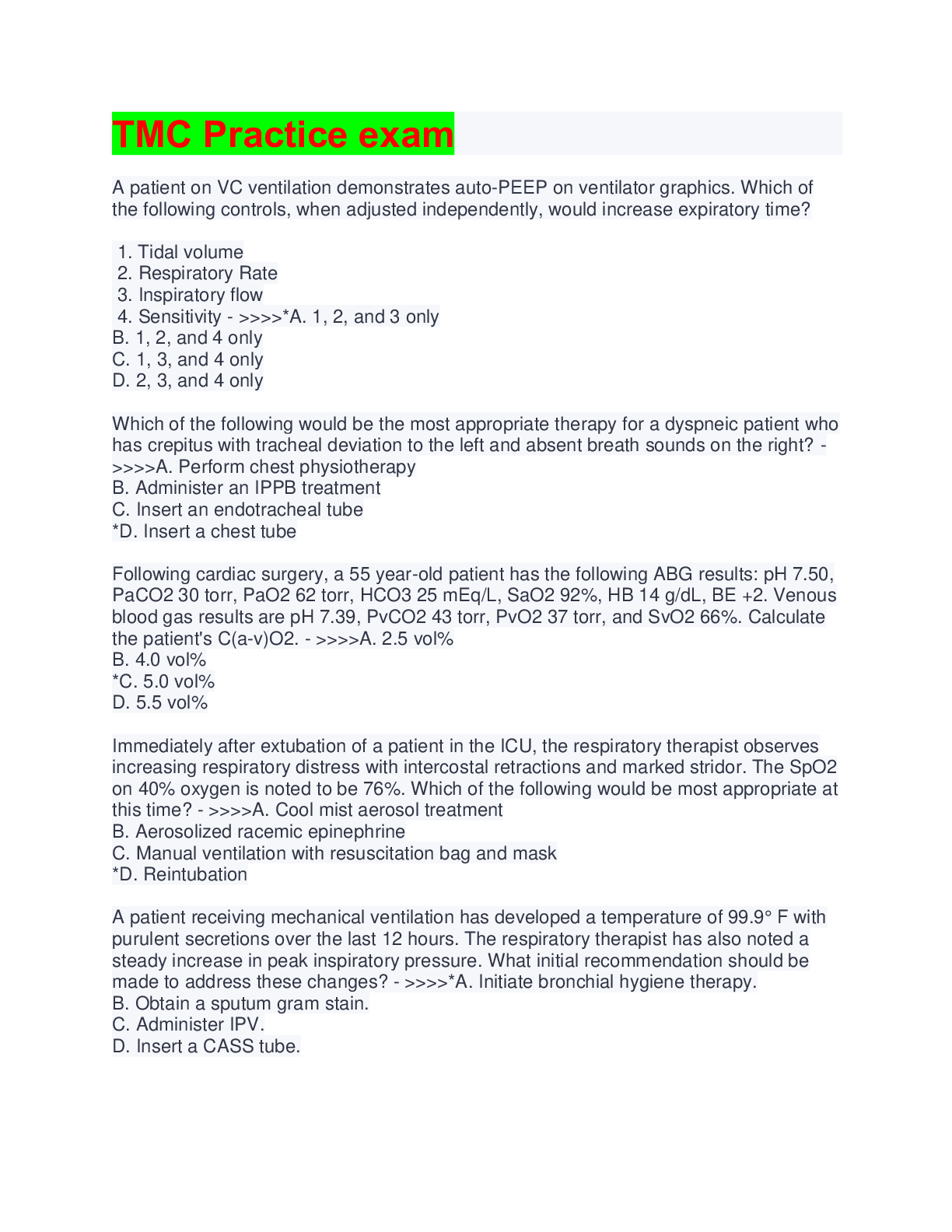*NURSING > QUESTIONS & ANSWERS > Hallmark BSN 205 Test | Questions with 100% Correct Answers | Verified | Updated 2023 (All)
Hallmark BSN 205 Test | Questions with 100% Correct Answers | Verified | Updated 2023
Document Content and Description Below
Hallmark BSN 205 Test | Questions with 100% Correct Answers | Verified | Updated 2023 Which of the following patients would require follow- up? An adolescent with a respiratory rate of 16 breaths... per minute. A child with a respiratory rate of 20 breaths per minute. A newborn with a respiratory rate of 40 breaths per minute. An adult with a respiratory rate of 10 breaths per minute. -✔✔ An adult with a respiratory rate of 10 breaths per minute. Which of the following vital signs recorded for an older adult would be considered acceptable (within normal limits)? Temp 98.6 °F (37 °C), P-56, R-20, BP 120/80, O2 sat 91%. Temp 97.0° F (36.1 °C), P-60, R-16, BP 116/78, O2 sat 95%. Temp 96.8° F (36 °C), P-60, R-18, BP 160/90, O2 sat 93%. Temp 98.0 °F (36.7 °C), P-76, R-22, BP 110/70, O2 sat 88%. -✔✔ Temp 97.0° F (36.1 °C), P-60, R-16, BP 116/78, O2 sat 95%. The nurse has delegated the task of temperature assessment to the NAP. Which information should be provided to the NAP? (Select all that apply.) The patient's diagnosis. The frequency for taking or monitoring the temperature. The patient's age. The type of temperature required. What changes to report immediately to the nurse. -✔✔ The frequency for taking or monitoring the temperature. The type of temperature required. What changes to report immediately to the nurse. Which of the following situations may affect a patient's vital signs? (Select all that apply.) O Isolation precautions. Time of day. O Occupation. Pain rated as a 7 on 0-10 pain scale. Moving from lying to standing position. -✔✔ Time of day. Pain rated as a 7 on 0-10 pain scale. Moving from lying to standing position. The nurse will take the patient's vital signs preoperatively and record them as part of the patient's preparation for surgery. Why is it necessary to take vital signs preoperatively? (Select all that apply.) To provide a set of vital signs to use for comparison during and after surgery. To determine whether the patient is "feeling funny" or "different". To verify the patient is not experiencing any complications that may contraindicate surgery or require intervention. To ensure the equipment is appropriately calibrated and functional. To provide the patient with reassurance that he or she is being cared for by a competent staff. -✔✔ To provide a set of vital signs to use for comparison during and after surgery. To verify the patient is not experiencing any complications that may contraindicate surgery or require intervention. The NAP reports to the nurse a 65-year-old patient s blood pressure is 160/98. What is the appropriate initial response of the nurse? Document this as a normal finding in an elderly adult. Assess the patient s blood pressure. Ask the NAP if the patient is nauseous. Instruct the NAP to obtain a full set of vital signs. -✔✔ Assess the patient s blood pressure. Which patient would it be appropriate for the nurse to delegate vital signs? Patient with recent complaint of headache. New admission to the hospital. Elderly nursing home resident. Patient transferred from 1CU. -✔✔ Elderly nursing home resident. Which person would be expected to have the lowest body temperature? A toddler who is febrile A child playing softball A 16 year old who ran 1 mile An 80 year old who walked half a mile -✔✔ An 80 year old who walked half a mile The NAP is preparing to measure a patient's vital signs. The patient reports having eaten a bowl of warm soup. The NAP asks the RN what he should do. What is the best response? Ask the patient not to eat, drink, or smoke for 20 minutes and then assess the patient's oral temperature Change to the red thermometer probe and take the patient's temperature rectally Since the soup was not hot, go ahead and take the patient's temperature Take the patient's temperature using the axillary route and when you record the reading, add 1 degree F -✔✔ Ask the patient not to eat, drink, or smoke for 20 minutes and then assess the patient's oral temperature For which patient would a tympanic thermometer be the preferred thermometer to use? A tachypneic patient who is receiving oxygen by nasal cannula A marathon runner who developed weakness during the race A newborn that requires continuous temperature monitoring A pediatric patient who had tubes surgically placed in the ears -✔✔ A tachypneic patient who is receiving oxygen by nasal cannula [Show More]
Last updated: 1 year ago
Preview 1 out of 9 pages

Reviews( 0 )
Document information
Connected school, study & course
About the document
Uploaded On
Apr 21, 2023
Number of pages
9
Written in
Additional information
This document has been written for:
Uploaded
Apr 21, 2023
Downloads
0
Views
77



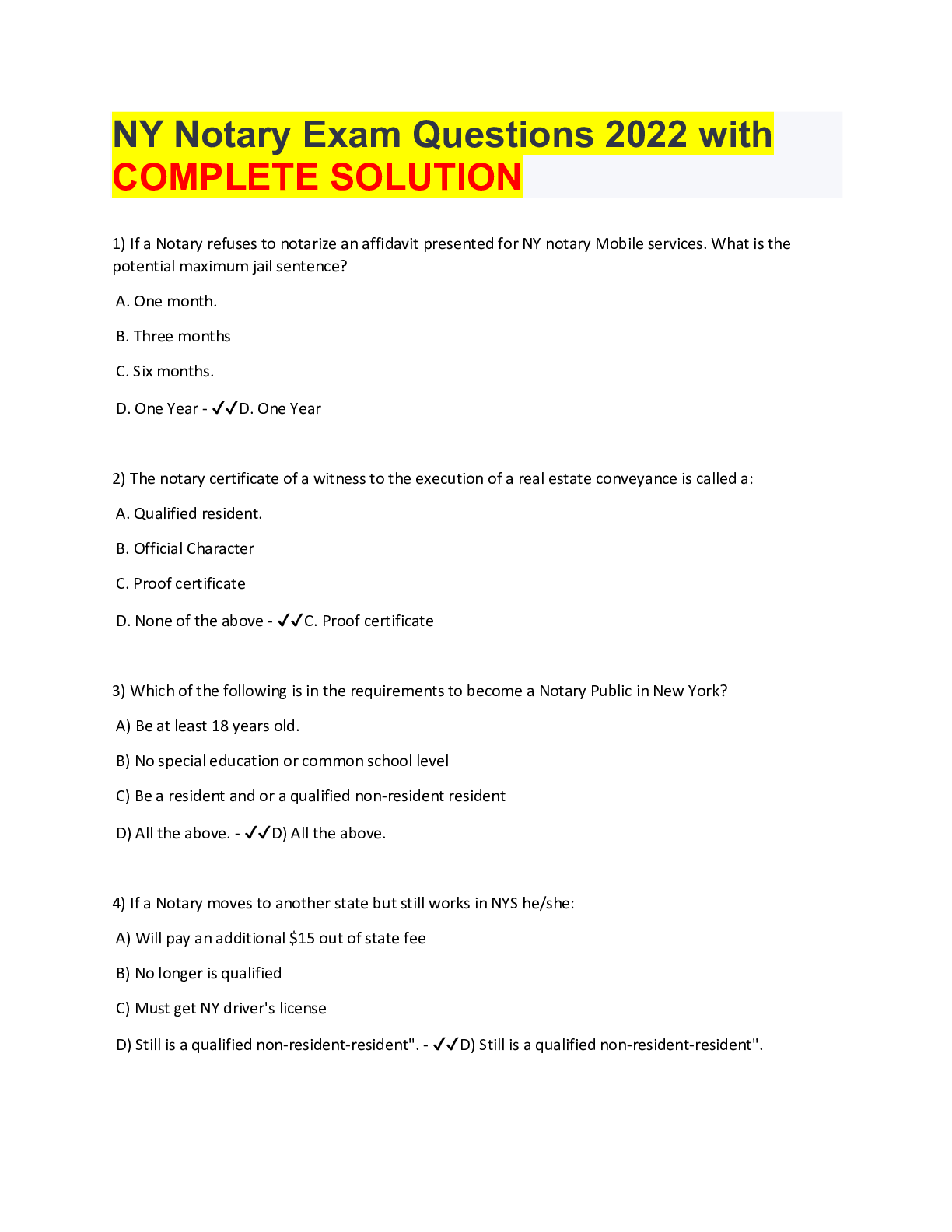


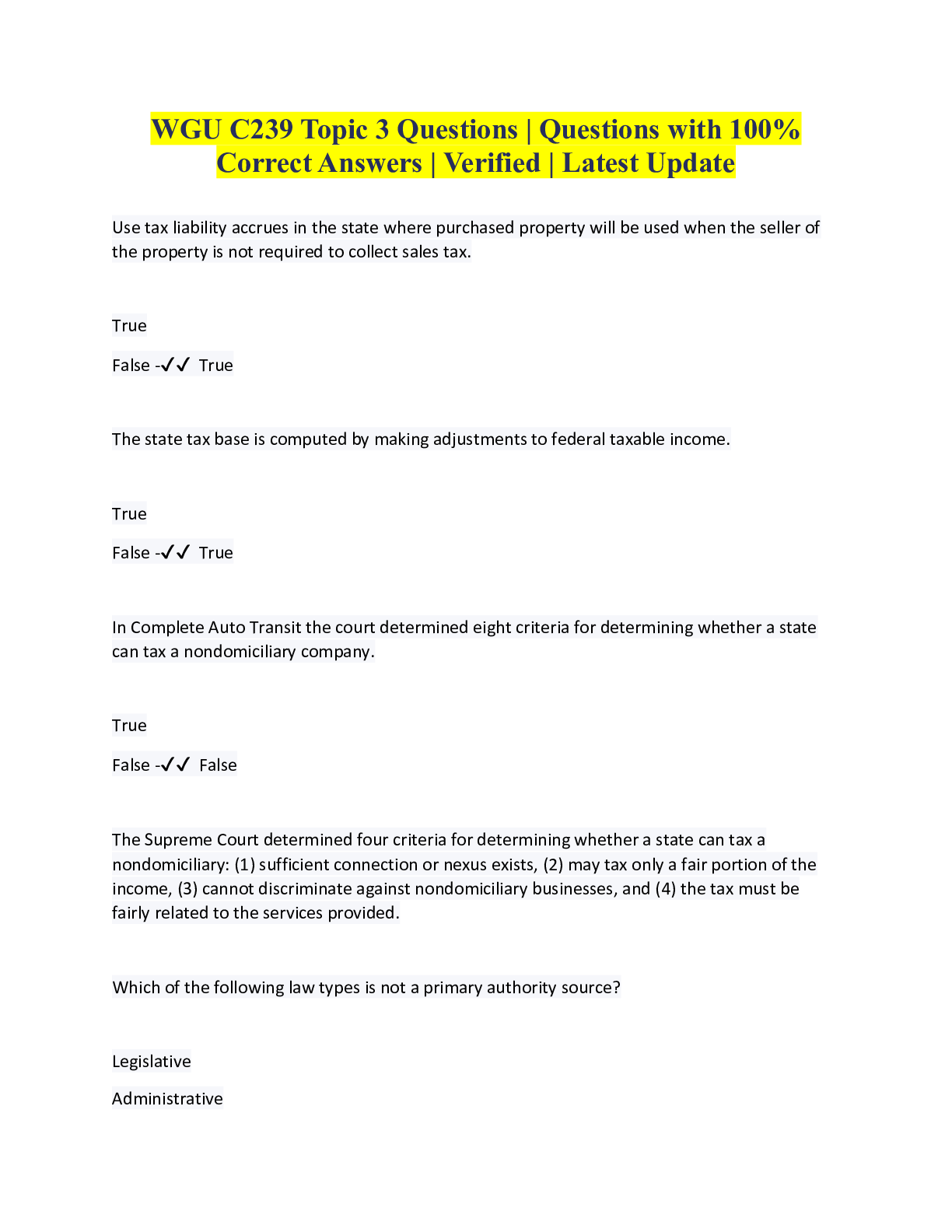
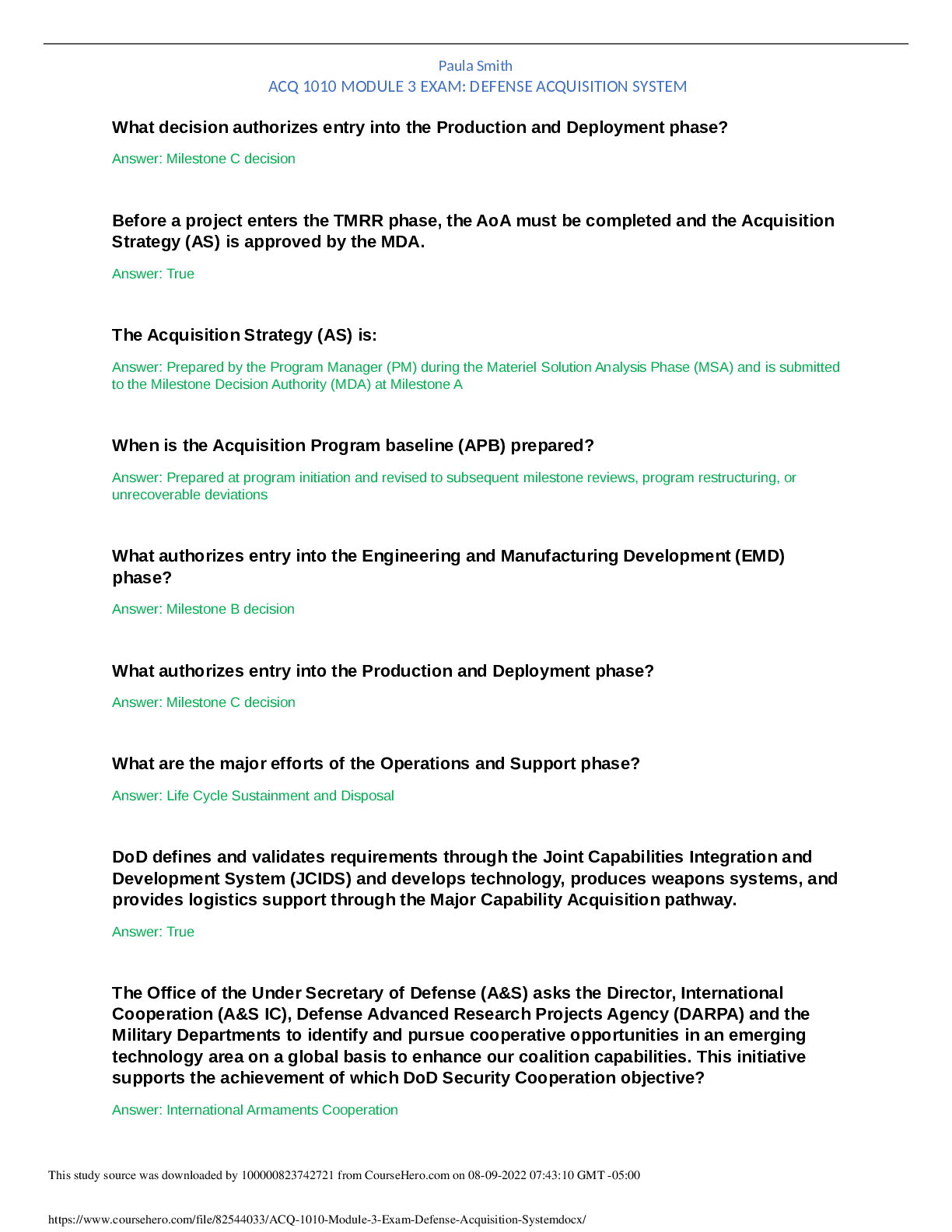


.png)
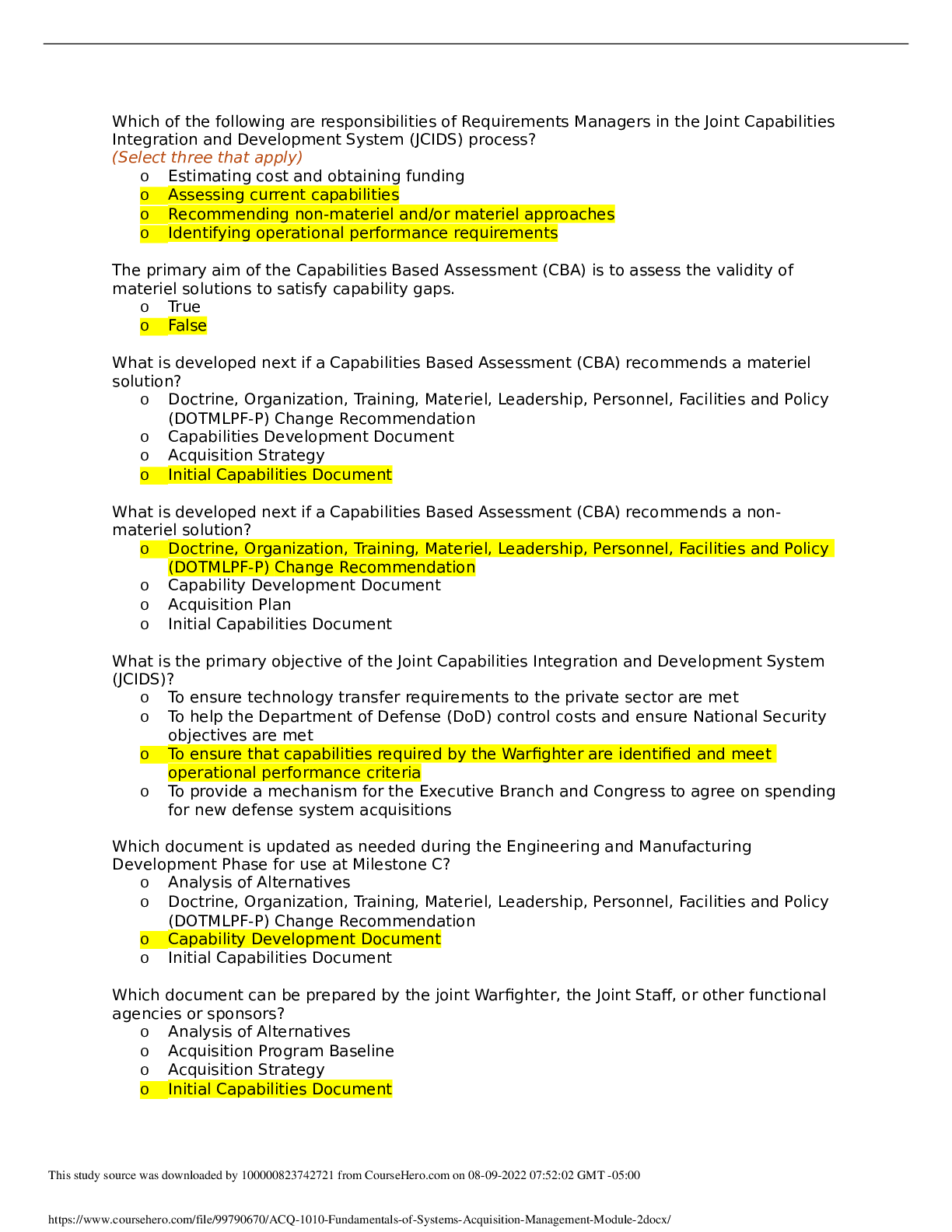
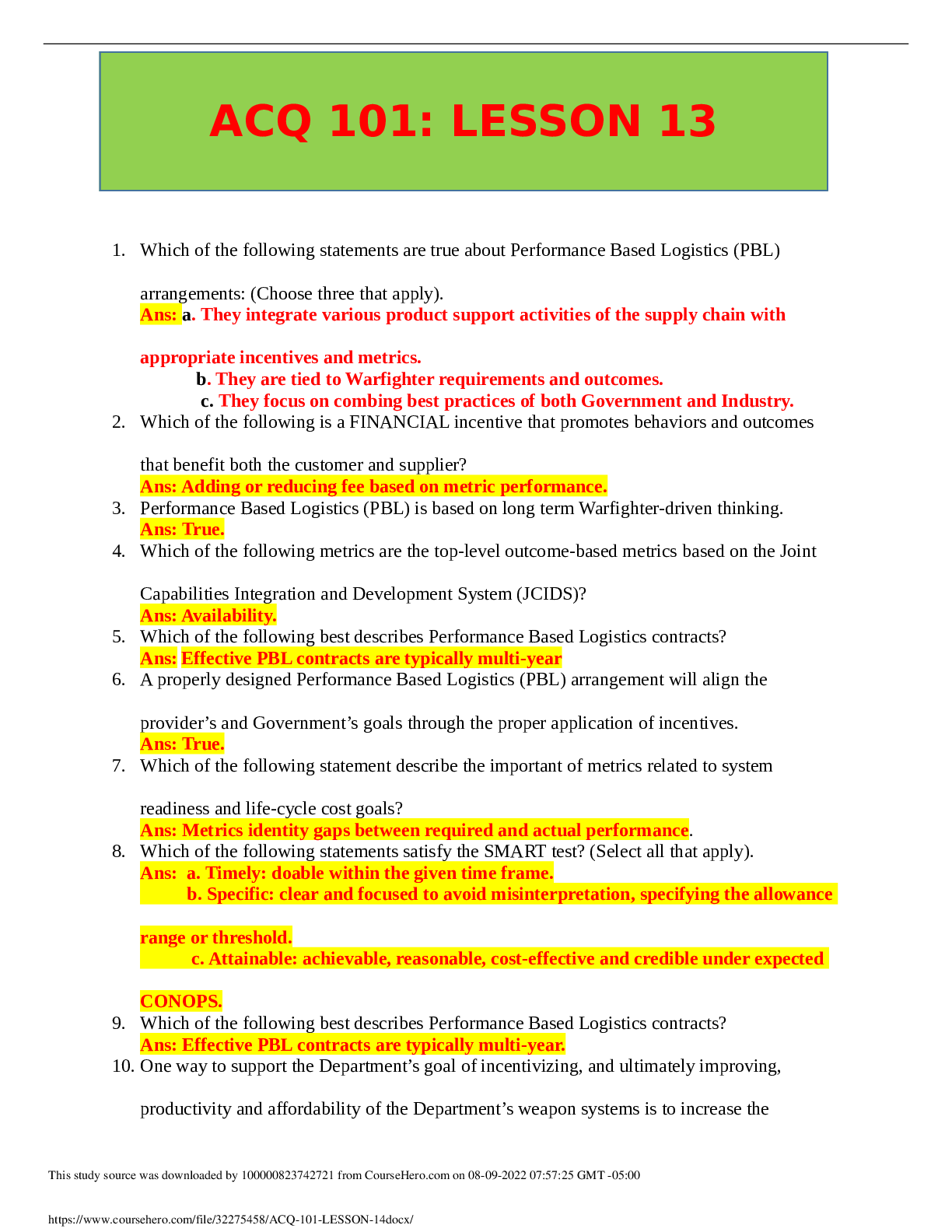
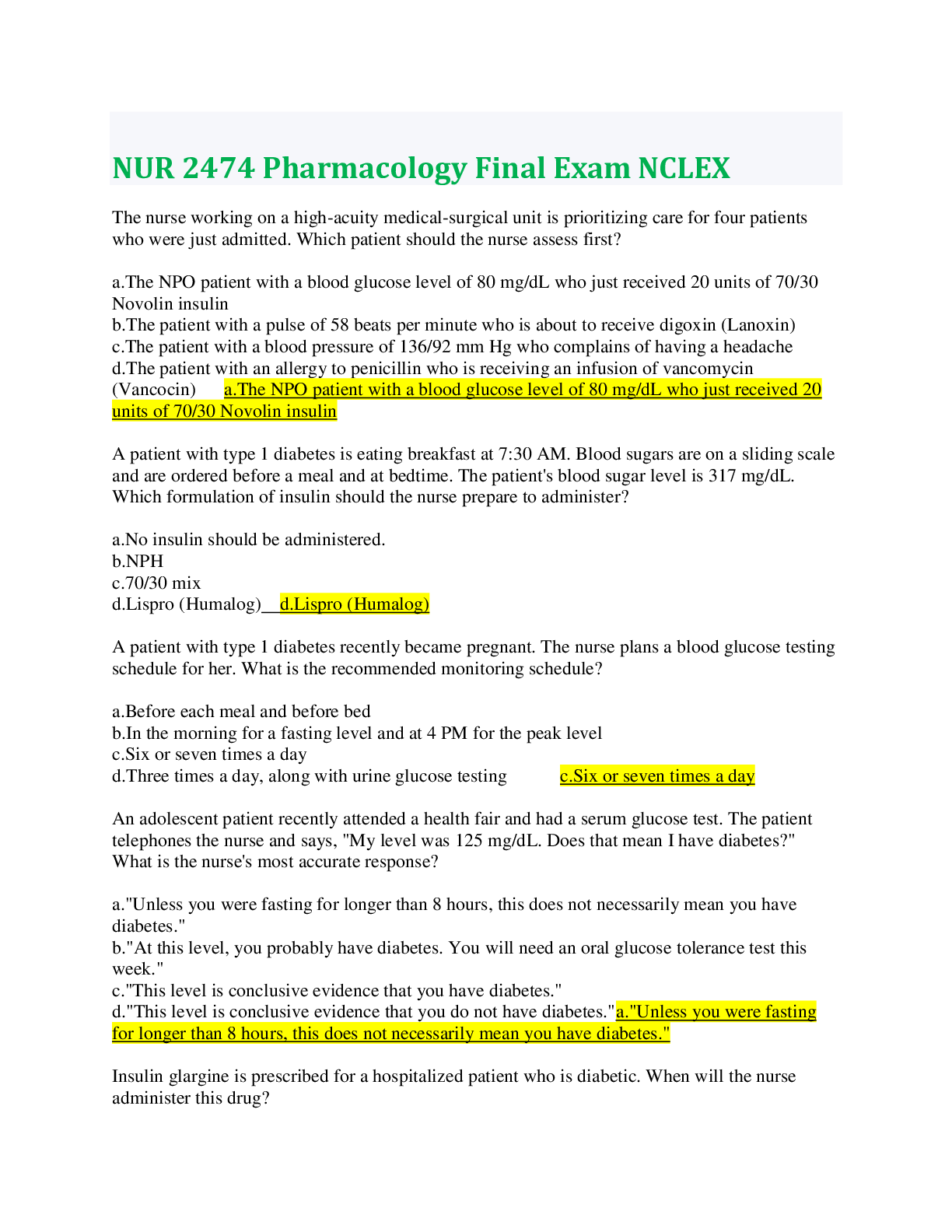
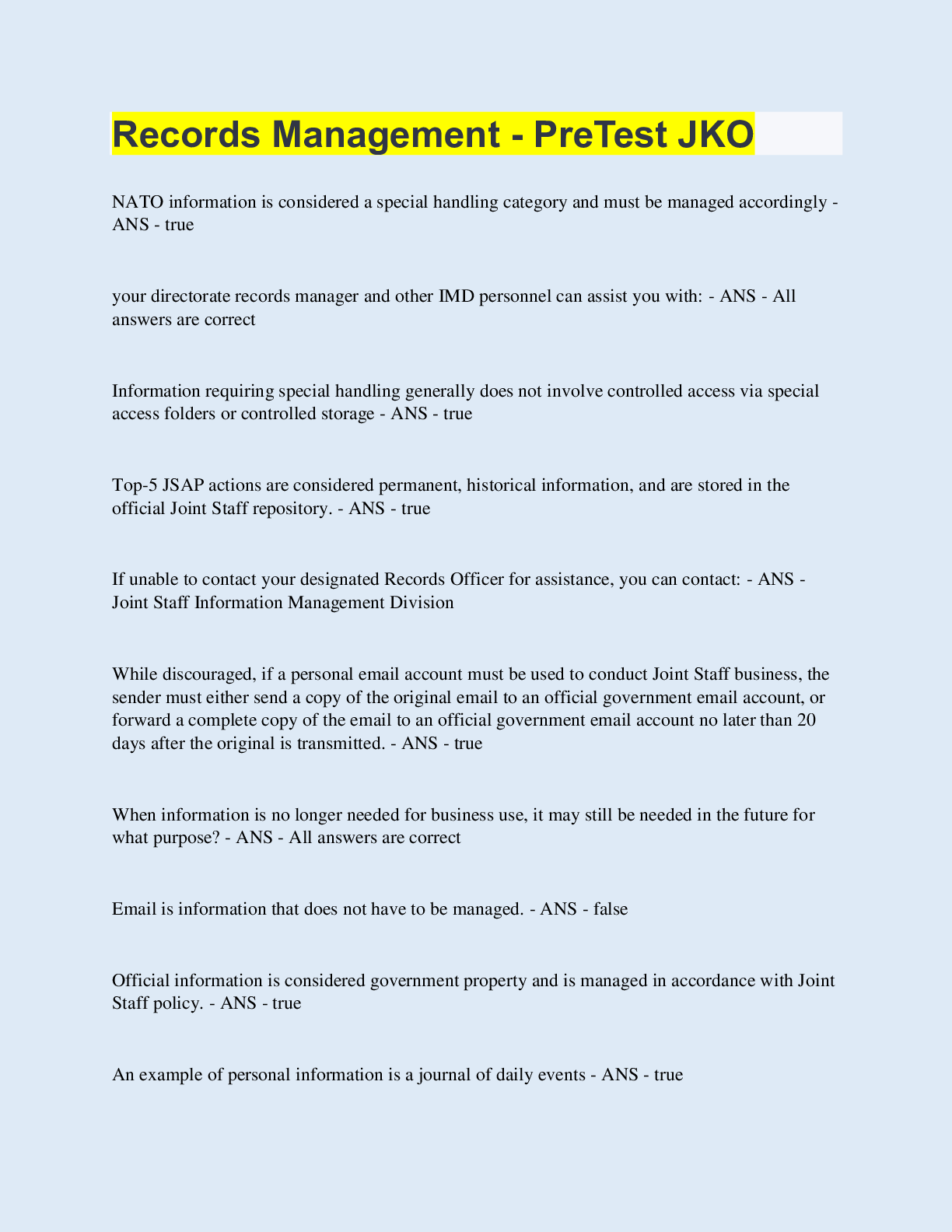
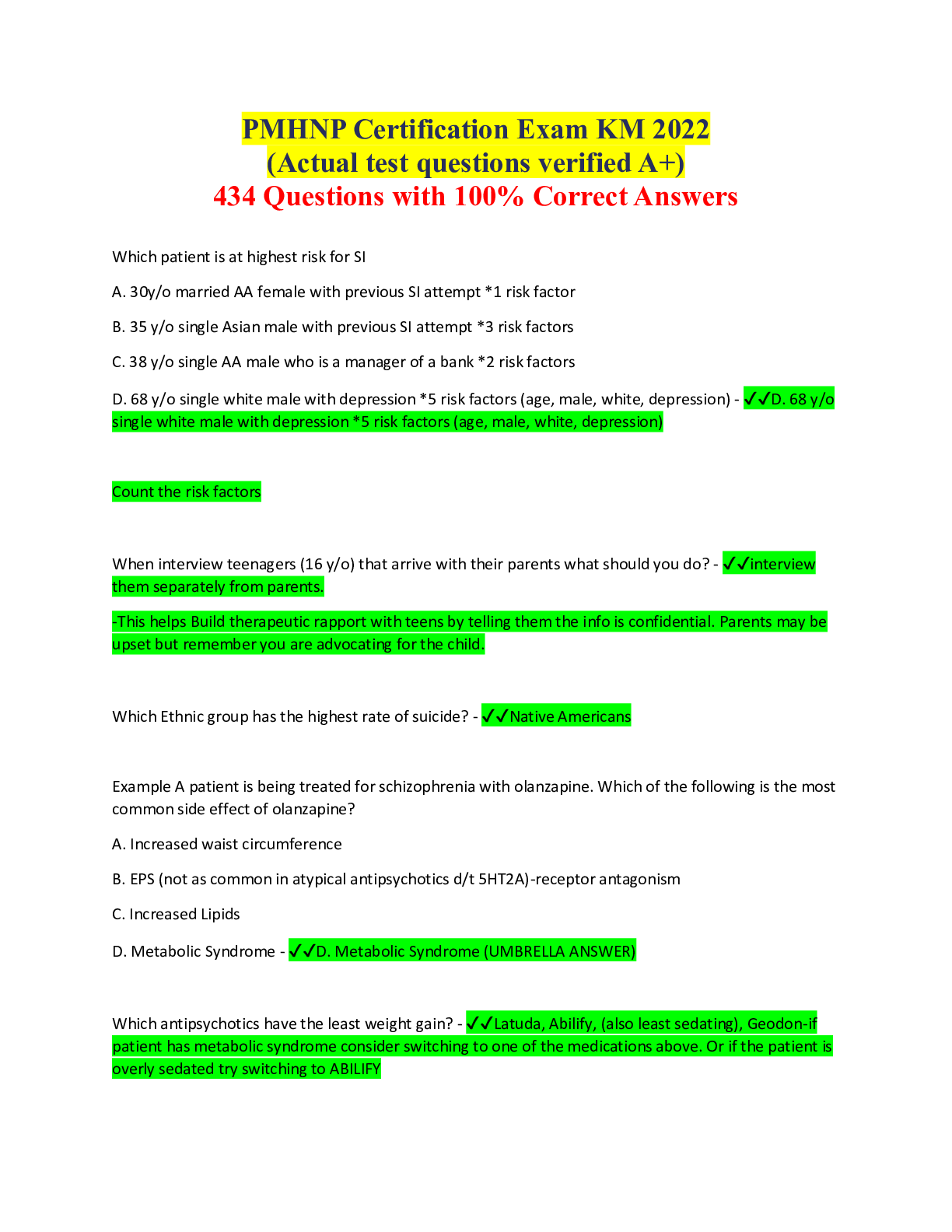




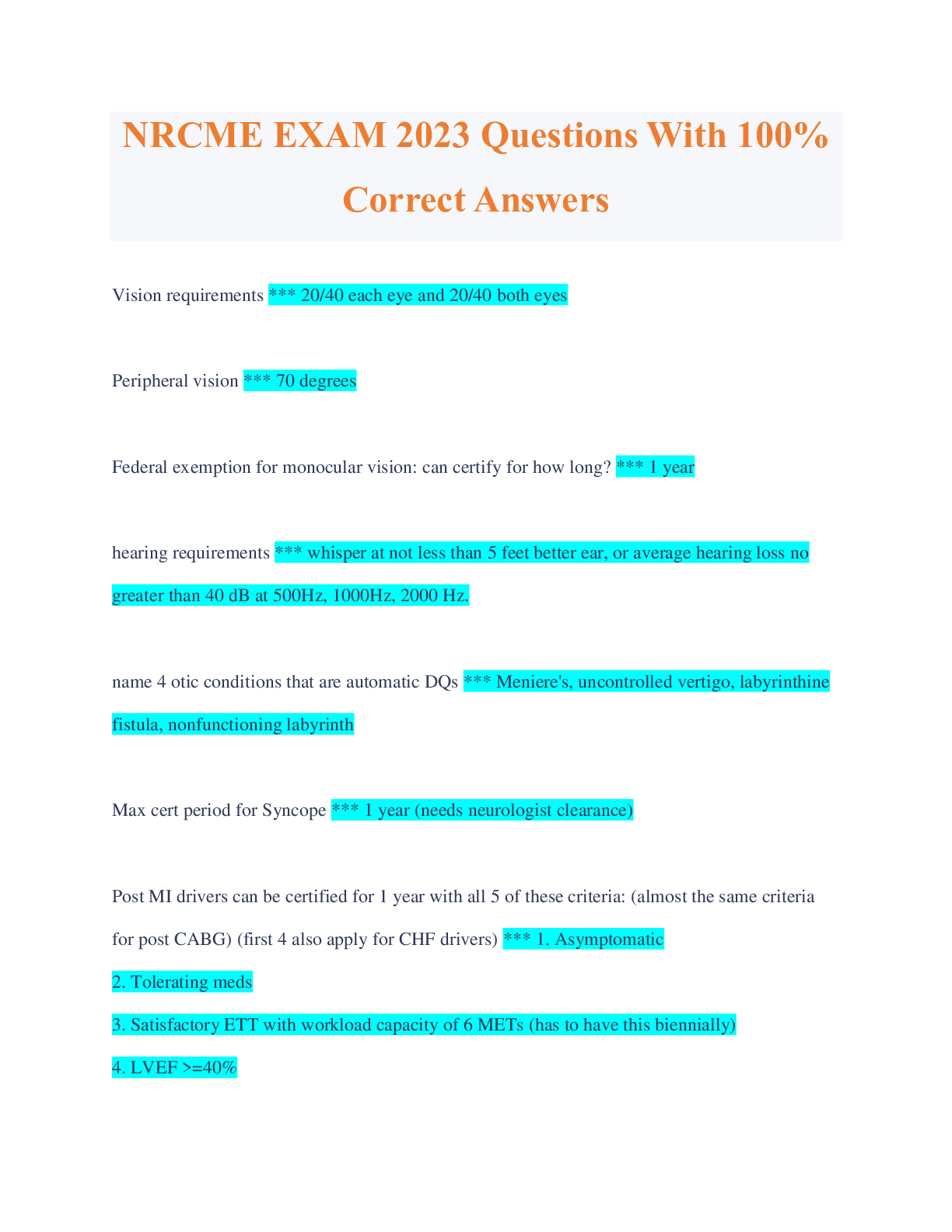

.png)
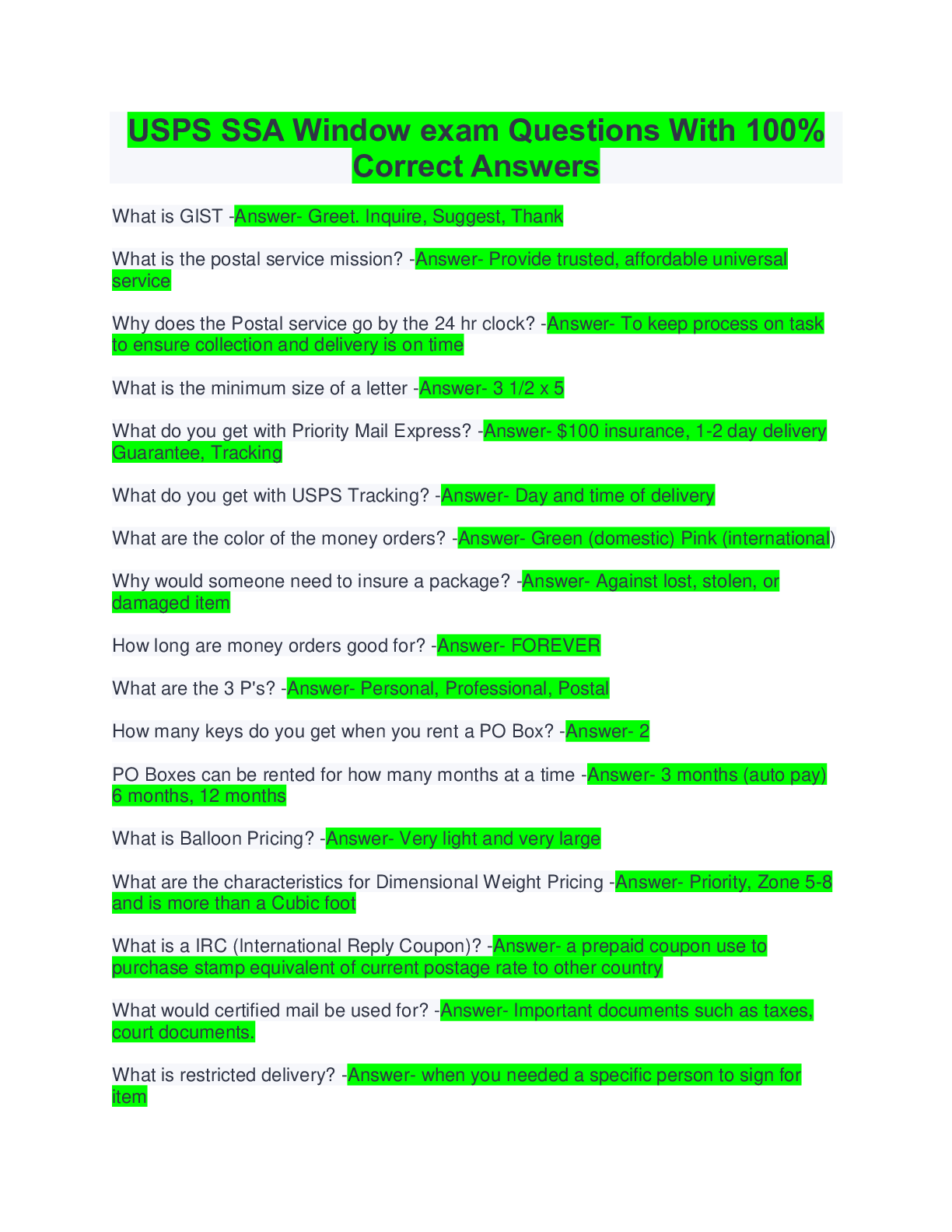
.png)
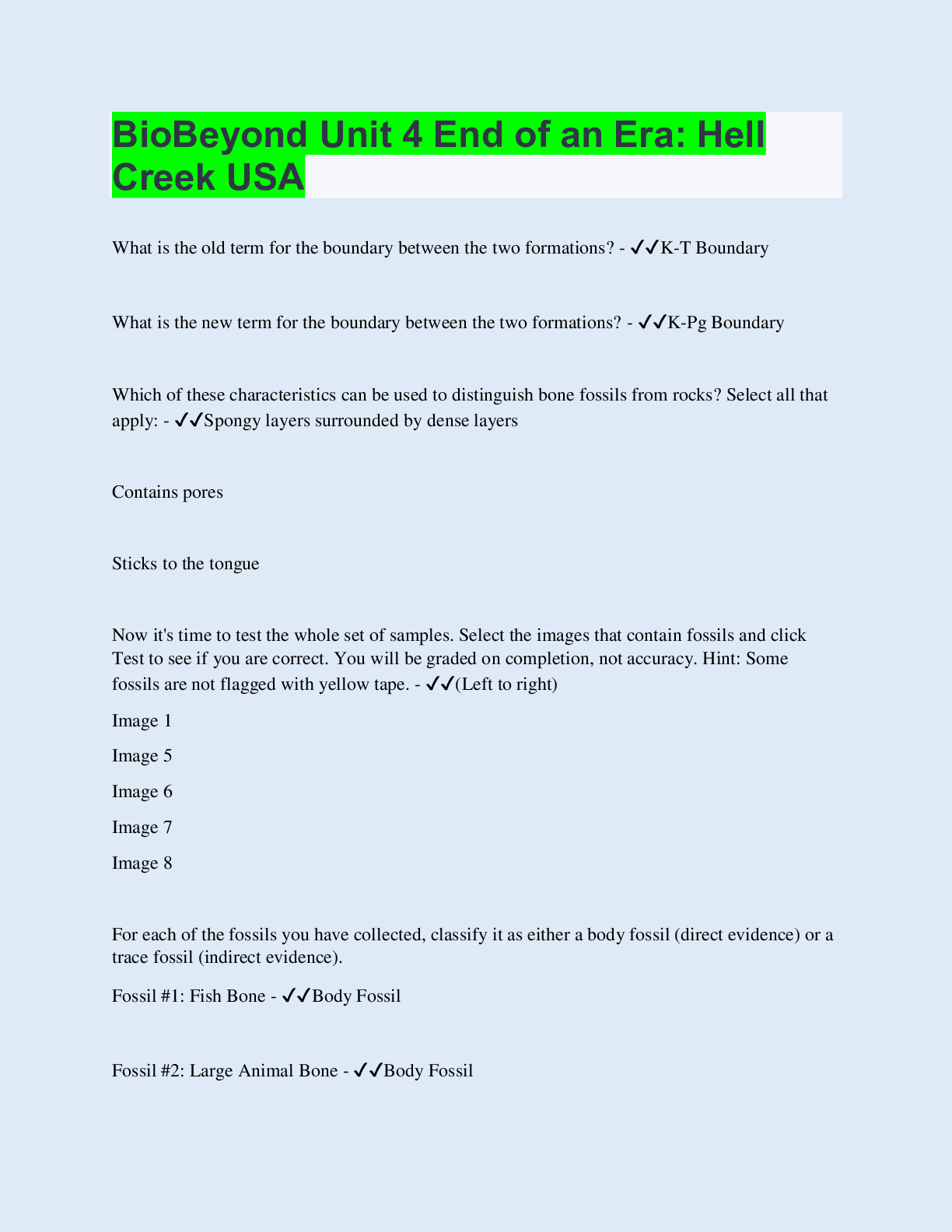
.png)
